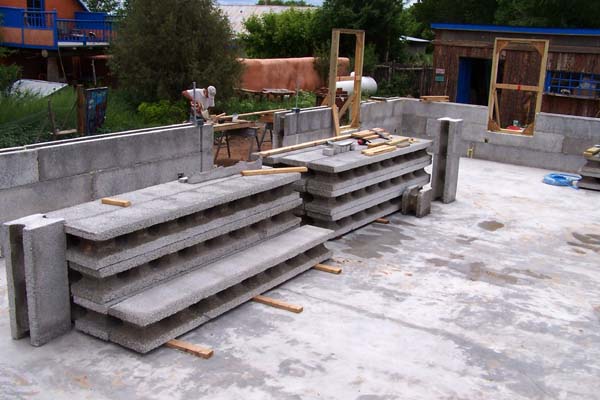Three courses of composite ICF block being raised as shown in this photo, with more blocks in the foreground ready to go. This view features the large two windows in the gallery section and the front door bucks in place, as we place block around them.
When raising the walls using composite ICF blocks, they are placed in a standard staggered brick pattern. There need not be any mortar, so to speak, when stacking the blocks. Instead, low-expansive spray foam is added to fill in any possible gaps when they line up. The manufacturer suggests a few dollops every few feet. We chose, however, to spray foam in a continual line at each joint where the bricks met. We feel that it helped us a great deal have not one bit of “blow out” when the blocks were filled with cement.
There is an alternative option to the spray foam offered by the manufacturer – that of using large “staples” to hold the bricks tight until the pour. They are used for each course and also on the corners by some builders. They are reusable and removed once the blocks are filled with cement. We opted to go with the foam method rather than using the staple method – and were very pleased with the results.
A structural aspect when raising the walls, to give added strength, are rebar sticks added in-between the rows. A standard for most cement wall systems is to provide a steel horizontal reinforcement, and this block is no exception. Required by our local codes, we placed rebar both vertically as well as horizontally into the walls. The vertical rebar required creates a web of steel from top to bottom in each wall, every few feet. Each piece is tied together as you might see in a standard cement slab, before it is poured. When the concrete pour is completed and each of the Rastra channels is filled, you can imagine the very, very strong wall which has been created.


